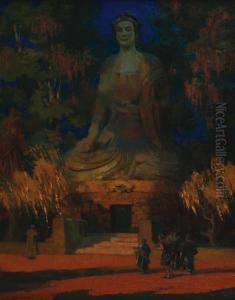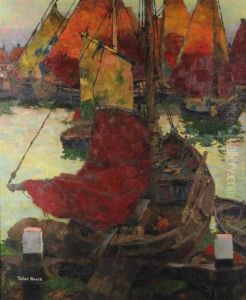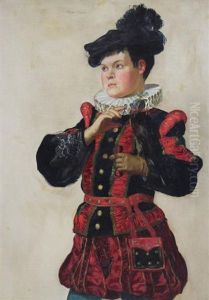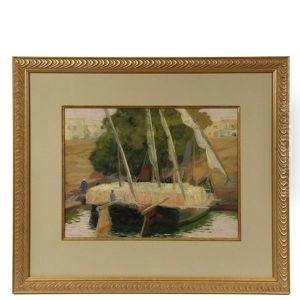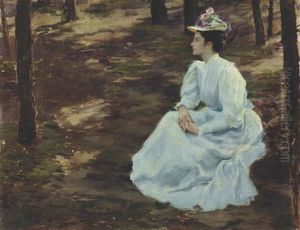Taber Sears Paintings
Taber Sears was an American artist known primarily for his mural work, which often featured allegorical and historical subjects. Born in Brooklyn, New York, in 1870, Sears grew up in an era where the American art scene was beginning to find its own identity, moving away from European influences and towards a more distinct American style.
As a young man, Sears showed a keen interest in art, which led him to pursue formal education in the field. He studied at the Art Students League of New York, a prestigious institution that has nurtured many prominent artists. He also traveled to Paris to hone his skills, which was a common practice for American artists at the time who sought to learn from the European masters.
Sears’ work was heavily influenced by the Beaux-Arts movement, which was characterized by its grandeur, classical forms, and often, its elaborate decorative elements. His murals were commissioned for a variety of public and private spaces, such as courtrooms, libraries, and other civic buildings, reflecting the era's belief in the power of art to inspire and elevate society.
Throughout his career, Sears was active in art circles and participated in various exhibitions. His work contributed to the American muralist tradition, which sought to convey national ideals and historical narratives through large-scale public art. His murals are characterized by their narrative quality, attention to detail, and use of color.
Taber Sears passed away in 1950, leaving behind a legacy of work that is still appreciated for its craftsmanship and contribution to American art. His murals can still be seen in various locations across the United States, serving as lasting reminders of the era in which he worked and the artistic values he helped promote.
